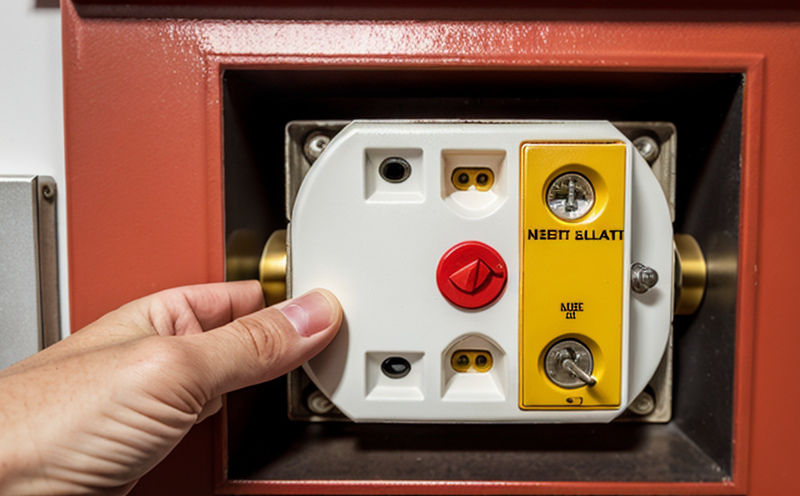Fire alarm system inspection
The fire alarm system inspection is a critical component in ensuring compliance with international standards and local regulations aimed at safeguarding lives and property. This service focuses on the periodic assessment of fire alarm systems to ensure their operational readiness, reliability, and effectiveness. The primary objective is to verify that these systems function as designed under various scenarios, including both normal operation and emergency conditions.
Compliance with standards such as NFPA 72 (National Fire Protection Association) and ISO/IEC 14976 ensures that fire alarm system inspections meet the highest industry benchmarks. These inspections encompass a comprehensive evaluation of all system components, including detectors, control panels, horns, strobes, speakers, and communication devices.
During an inspection, we utilize advanced testing methodologies to simulate real-world conditions. This includes smoke and heat tests, which are conducted in controlled environments to assess the sensitivity and response time of fire detectors. Additionally, functional checks are performed on control panels to ensure they can accurately interpret signals from various alarm inputs and initiate appropriate responses.
The scope of our inspection also covers the verification of system integration with other building safety systems such as fire sprinklers and emergency lighting. This ensures that in case of a fire, all safety measures work seamlessly together to provide maximum protection for occupants.
Our team performs detailed documentation of each component's performance during testing, ensuring thorough coverage of all relevant aspects. Documentation is essential for tracking the system’s condition over time and identifying any potential issues before they escalate into full-scale failures.
Benefits
The benefits of a fire alarm system inspection are numerous, ranging from enhanced safety to regulatory compliance. Regular inspections help identify and rectify any faults or malfunctions in the early stages, minimizing the risk of catastrophic failures during critical moments.
A well-maintained fire alarm system can significantly reduce the likelihood of false alarms, which not only save lives but also prevent unnecessary evacuations and disruptions to daily operations. This ensures that when a genuine emergency occurs, building occupants are alerted promptly without confusion or panic.
From an operational perspective, periodic inspections help maintain the integrity of the fire alarm system, thereby extending its lifespan and reducing long-term maintenance costs. By addressing minor issues before they become major problems, we can prevent costly repairs and replacements down the line.
In terms of regulatory compliance, our comprehensive inspection services ensure that your facility meets all relevant codes and standards. This is crucial for avoiding potential legal penalties and ensuring a safe environment for everyone involved.
Environmental and Sustainability Contributions
The environmental impact of fire alarm system inspections extends beyond immediate safety measures to include long-term sustainability considerations. By identifying inefficiencies early, we contribute to reducing the overall energy consumption associated with these systems.
A well-functioning fire alarm system operates optimally when it is properly maintained. This means that unnecessary power usage is minimized, contributing positively to your facility's environmental footprint. Additionally, by ensuring that all components are in good working order, we help prevent potential hazards that could lead to further damage or loss.
The use of advanced testing methodologies also allows us to recommend energy-efficient alternatives where appropriate. For instance, modern smoke detectors equipped with longer-lasting batteries can extend the operational life between replacements, reducing waste and resource consumption.
Our inspections not only enhance safety but also promote responsible stewardship of resources, aligning your facility with broader sustainability goals. By integrating these practices into routine maintenance schedules, you contribute to a more sustainable future while maintaining a safe environment for all occupants.
Use Cases and Application Examples
| Use Case | Description | Application Example |
|---|---|---|
| Building Commissioning and Acceptance Testing | Ensuring that the fire alarm system operates correctly from day one. | A new office complex undergoing commissioning would undergo a full inspection to ensure all systems are operational before occupancy. |
| Annual and Biennial Inspections | Compliance with local regulations requiring periodic inspections of fire alarm systems. | A hospital conducting annual inspections to maintain compliance with NFPA standards. |
| New Construction Projects | Verification that all fire safety measures are correctly installed and operational. | A retail chain installing a new store building, requiring an inspection of the integrated fire alarm system. |
| Post-Maintenance Checks | Evaluation after any service or repair work to ensure the system is back in full working order. | An industrial facility performing post-maintenance checks after a recent upgrade of its fire alarm system. |
| Pre-Occupancy Inspections | Safety checks before opening new buildings or areas to the public. | A university preparing for the start of the academic year, ensuring all fire safety systems are operational. |
| Emergency Preparedness Drills | Simulating real-world conditions during emergency drills. | An office building practicing its evacuation procedures with a full-scale drill involving the fire alarm system. |
| Periodic Review for Compliance | Ensuring ongoing compliance with local and national codes. | A corporate headquarters conducting periodic reviews to ensure adherence to NFPA 72 standards. |





